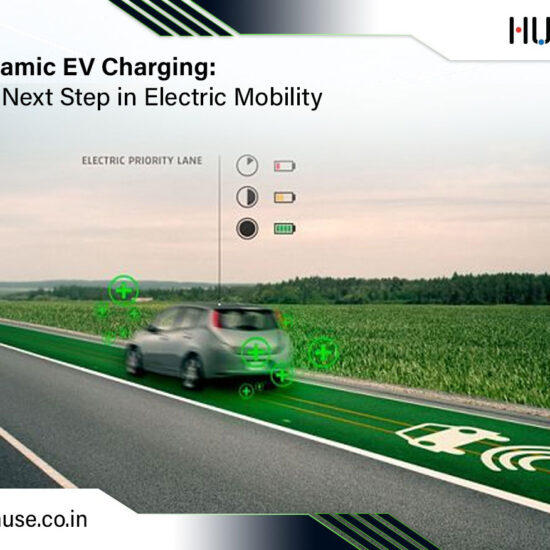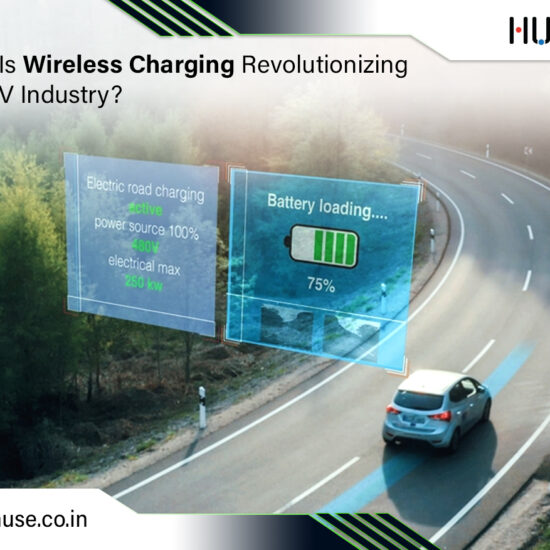In the early 1900s, transportation primarily relied on bullock carts, reflecting a simpler time. Fast-forward to the present, and electric vehicles (EVs) are transforming the way we think about mobility.
As the number of EVs on the road increases, the focus is shifting toward more efficient and practical ways to recharge them. Wireless charging is one such innovation, offering numerous advantages for EV owners. But what are they?
To learn more about EVs and the advantages of wireless charging, keep reading.
What Is Wireless Charging for Electric Vehicles (EVs)?
Wireless charging technology allows electric vehicles (EVs) to recharge without the need to plug into a socket. Unlike traditional charging stations that require physical connections, wireless charging works through electromagnetic induction.
The process involves the use of a charging pad placed on the ground, typically installed in parking areas or home garages. The system includes transmitter coils embedded beneath the surface of the road, which are connected to an above-ground management unit (AMU).
Acting like a substation, the AMU draws power from the grid and supplies it to the transmitter. The transmitter then wirelessly transfers this power to a receiver integrated underneath the vehicle’s chassis through electromagnetic induction, providing a seamless and efficient charging experience.
How Does Wireless Charging Work?
The basic principle of wireless EV charging involves three things:
- a transmitter
- a receiver
- AMU
The charging pad acts as the transmitter, generating an alternating current that creates a magnetic field. When an EV is parked above this pad, the receiver embedded in the car’s underside captures this energy and converts it into direct current to charge the battery.
With the wireless EV charging system, there’s no need to fumble with cords or worry about connectors wearing out. This seamless connection makes the charging process not only more convenient but also more reliable, ensuring that EV owners can effortlessly power their vehicles without the usual hassles associated with traditional charging methods.
What Are The Advantages of Wireless Charging?
1. Increased Accessibility
Wireless charging systems improve accessibility for all users, including those with disabilities. The removal of cables means that anyone, regardless of their physical ability, can recharge their vehicle effortlessly. This inclusivity opens up EV ownership to a broader audience, encouraging more people to transition to electric vehicles.
2. Convenience
Drivers no longer need to struggle with charging cables or worry about plugging in their vehicles. Convenience is one of the primary advantages of wireless charging. This feature is especially beneficial for those who may have difficulty handling cords. Simply parking over a charging pad allows for instant charging, making the experience more user-friendly.
- Environmental Benefits
By promoting the use of electric vehicles, we reduce greenhouse gas emissions and dependency on fossil fuels. Moreover, many wireless charging systems are designed to utilize renewable energy sources, further decreasing their environmental footprint. This aligns with the growing demand for sustainable practices in the automotive industry.
- Cost-Effectiveness in the Long Run
While the initial investment in wireless charging infrastructure may be higher compared to traditional charging stations, the long-term benefits can outweigh these costs. EV charging systems can reduce the need for extensive wiring and physical installations, leading to lower maintenance costs over time.
Additionally, as wireless vehicle charging continues to advance, we can expect prices to decrease, making it more accessible for both consumers and businesses. In the future, we may even see wireless charging integrated into parking lots, streets, and other public spaces, further reducing the costs associated with charging infrastructure.
- Endless Driving Range
Wireless charging allows vehicles to charge while in motion, meaning the vehicle can keep driving without worrying about running out of power. The charging happens simultaneously with consumption, making long-distance travel more feasible.
- Eliminating Battery Replacement Costs
Inductive charging is not like ultra-fast charging, where the battery is charged at very high rates, eventually degrading battery health and lifespan. Wireless charging avoids these issues since the vehicle is typically charged intermittently and even while in motion, with lower charging speeds, thus preventing thermal runoff and preserving battery life.
- Potential to Downsize Battery Pack Size
Because vehicles can power up while in transit, there’s no need for large battery packs. A smaller battery pack can be used, and the rate of power transfer can match the rate of consumption, reducing the size and weight of the battery without compromising performance.
- Reducing Total Cost of Ownership (TCO)
The reduction in battery pack size alone can decrease the cost of owning an EV by 15-25%. Additionally, the elimination of battery replacement costs—thanks to wireless charging’s gentle and continuous power—can save consumers an additional 35-40%, further lowering the total cost of ownership for electric vehicles.
HUSE HQ: Your Solution for Wireless EV Charging Systems
At HUSE HQ, we recognize the significance of wireless charging in shaping the future of electric vehicles. Our solutions are designed with user convenience and sustainability in mind. We understand that the future of transportation lies in efficient energy solutions, and our wireless charging technology is proof of that vision.
Why You Should Partner with HUSE HQ?
- Advanced Technology:
Our wireless charging systems utilize the latest technology, ensuring effective and efficient charging.
- User-Friendly Design:
We prioritize user experience, making our systems easy to use for everyone.
- Comprehensive Support:
We provide ongoing support and maintenance for our charging systems, ensuring that our customers have reliable access to charging whenever needed.
- Sustainability Focus:
Our solutions support the transition to sustainable energy, aligning with global efforts to reduce carbon emissions.
Read More –
Conclusion
As the world shifts toward electric vehicles, adopting wireless charging systems will be important for maximizing the benefits of this clean technology. By understanding the advantages of wireless charging, we can better appreciate its potential to transform how we think about mobility.
With innovative solutions offered by HUSE HQ, the transition to a sustainable future becomes increasingly attainable. By prioritizing wireless charging systems, we pave the way for a greener, more efficient transportation landscape.
For more insights on electric vehicles and their benefits, visit our website.





